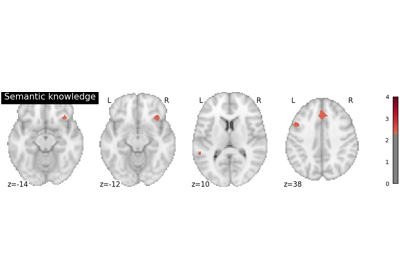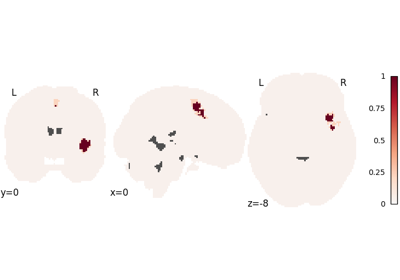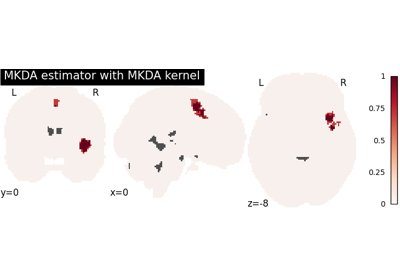nimare.meta.cbma.base.PairwiseCBMAEstimator
- class PairwiseCBMAEstimator(kernel_transformer, *args, **kwargs)[source]
Bases:
nimare.meta.cbma.base.CBMAEstimatorBase class for pairwise coordinate-based meta-analysis methods.
Changed in version 0.0.8:
[REF] Use saved MA maps, when available.
New in version 0.0.3.
- Parameters
kernel_transformer (
nimare.meta.kernel.KernelTransformer, optional) – Kernel with which to convolve coordinates from dataset. Default is ALEKernel.*args – Optional arguments to the
nimare.base.MetaEstimator__init__ (called automatically).**kwargs – Optional keyword arguments to the
nimare.base.MetaEstimator__init__ (called automatically).
- compute_summarystat(data)[source]
Compute summary statistics from data.
The actual summary statistic varies across Estimators. For ALE and SCALE, the values are known as ALE values. For (M)KDA, they are “OF” scores.
- Parameters
data (array, pandas.DataFrame, or list of img_like) – Data from which to estimate summary statistics. The data can be: (1) a 1d contrast-len or 2d contrast-by-voxel array of MA values, (2) a DataFrame containing coordinates to produce MA values, or (3) a list of imgs containing MA values.
- Returns
stat_values (1d array) – Summary statistic values. One value per voxel.
- correct_fwe_montecarlo(result, voxel_thresh=0.001, n_iters=10000, n_cores=- 1, vfwe_only=False)[source]
Perform FWE correction using the max-value permutation method.
Only call this method from within a Corrector.
- Parameters
result (
nimare.results.MetaResult) – Result object from a KDA meta-analysis.voxel_thresh (
float, optional) – Cluster-defining p-value threshold. Default is 0.001.n_iters (
int, optional) – Number of iterations to build the vFWE and cFWE null distributions. Default is 10000.n_cores (
int, optional) – Number of cores to use for parallelization. If <=0, defaults to using all available cores. Default is -1.
- Returns
images (
dict) – Dictionary of 1D arrays corresponding to masked images generated by the correction procedure. The following arrays are generated by this method: ‘vthresh’, ‘logp_level-cluster’, and ‘logp_level-voxel’.
See also
nimare.correct.FWECorrectorThe Corrector from which to call this method.
Examples
>>> meta = MKDADensity() >>> result = meta.fit(dset) >>> corrector = FWECorrector(method='montecarlo', voxel_thresh=0.01, n_iters=5, n_cores=1) >>> cresult = corrector.transform(result)
- fit(dataset1, dataset2, drop_invalid=True)[source]
Fit Estimator to two Datasets.
- Parameters
dataset1/dataset2 (
nimare.dataset.Dataset) – Dataset objects to analyze.- Returns
nimare.results.MetaResult– Results of Estimator fitting.
Notes
The
fitmethod is a light wrapper that runs input validation and preprocessing before fitting the actual model. Estimators’ individual “fitting” methods are implemented as_fit, although users should callfit.


